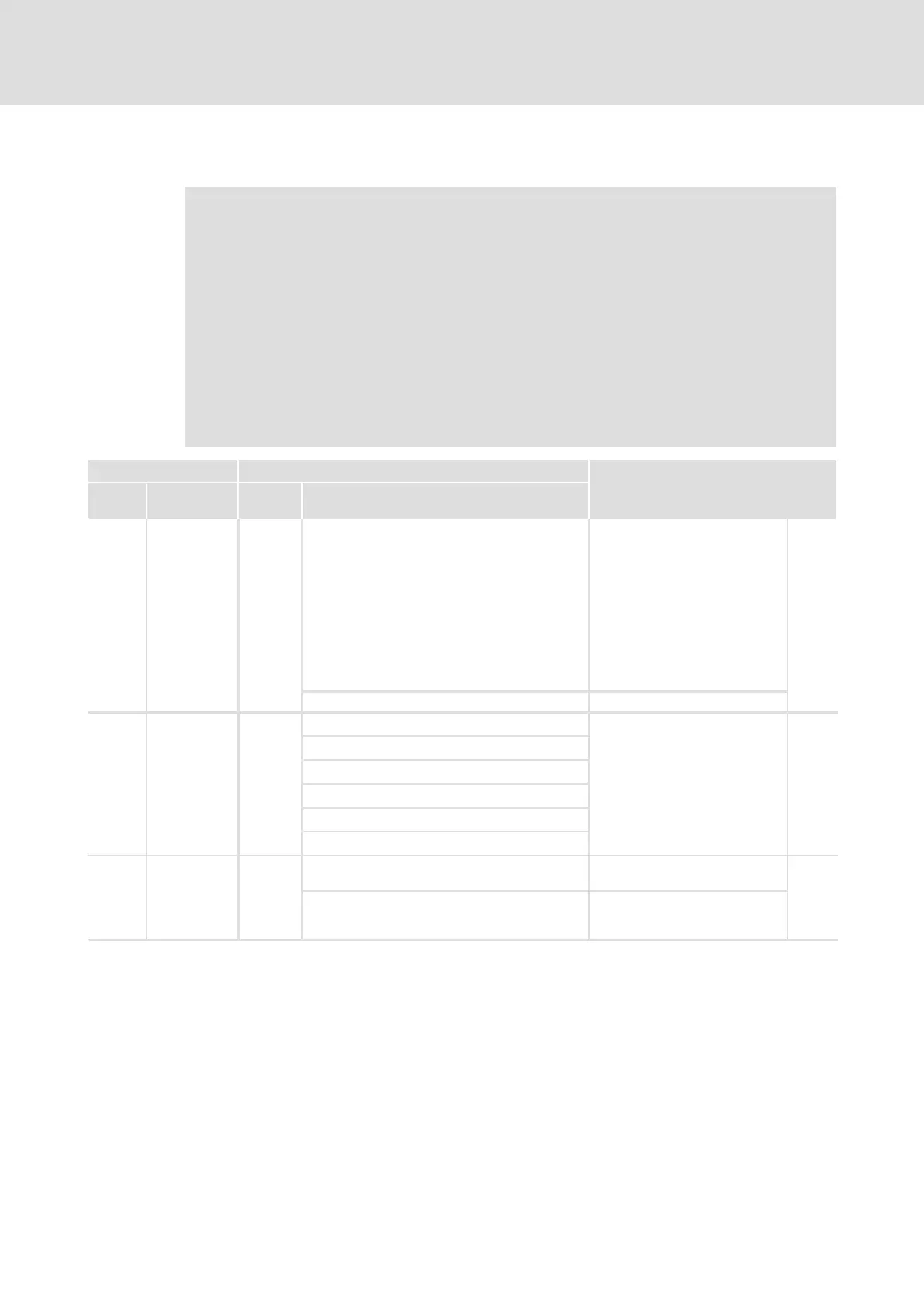System bus (CAN / CAN−AUX) configuration
Setting the CAN node address and baud rate
Settings via codes
8
158
EDBCSXA064 EN 3.2
8.1.2 Settings via codes
Note!
ƒ The settings in C0350/C2450 (CAN node address) and C0351/C2451 (baud
rate) are only used if the (address) switches 2 ... 7 of the DIP switch S1 are
switched off (OFF).
ƒ If only one (address) switch 2 ... 7 is switched on (ON), the settings of the DIP
switch S1 usually apply.
ƒ The baud rate (C0351/C2451) must be set identically for all CAN bus nodes.
ƒ If the Lenze setting has been loaded via C0002,
– C0351/C2451 is set = 0 (500 kbits;
– you have to reset the baud rate (C0351/C2451) and the CAN node address
(C0350/C2450).
Code Possible settings IMPORTANT
No. Designation Lenze/
{Appl.}
Selection
C0350 CAN address 32 Node address for CAN bus
interface X4
l This code is not active if one
of the switches 2 ... 7 of the
DIP switch is set to "ON".
( 156)
l After the setting process, a
reset node is required.
l A definite node address must
be assigned to each CAN
node.
156
458
1 {1} 63
C0351 CAN baud rate 0 Baud rate for CAN bus interface
X4
l The baud rate must be set
identically for all CAN nodes.
l This code is not active if one
of the switches 2 ... 7 of the
DIP switch is set to "ON".
l After the setting process, a
reset node is required.
156
0 500 kbps
1 250 kbits/sec
2 125 kbit/s
3 50 kbps
4 1000 kbit/s
C2450 CANa address 1
Node address for CAN bus
interface X14 (CAN−AUX)
156
458
1 {1} 63 This code is inactive if one of DIP
switches 2 ... 7 and switch 1 are
set to "ON".
